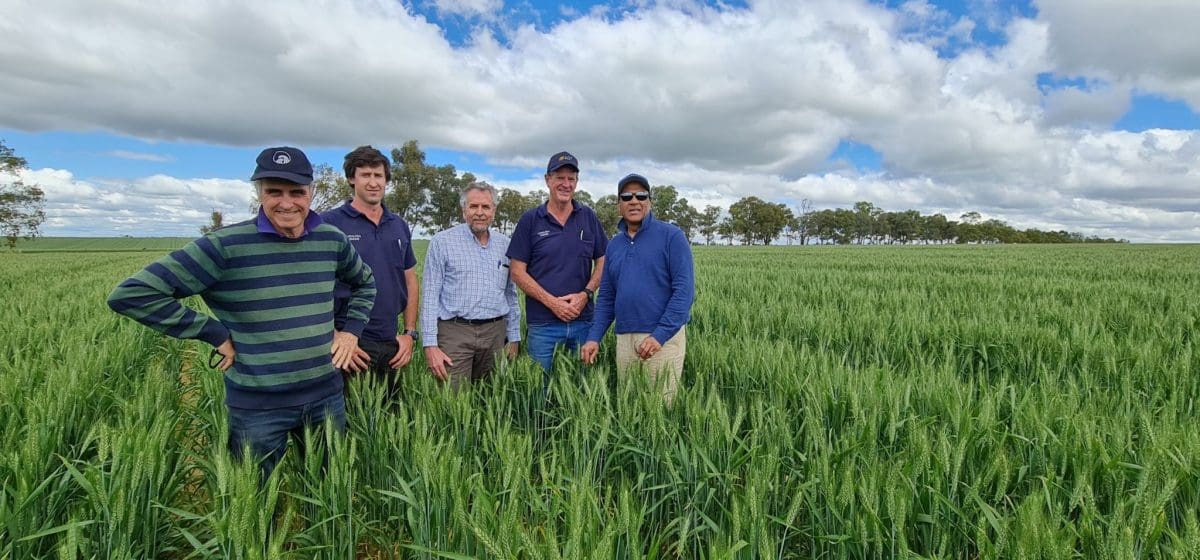
Dr Mark Sweetingham, grower Daniel Birch, UWA Professor Wallace Cowling, grower Rod Birch and Prof Siddique. Photo: UWA
A METHOD that determines the ideal fertiliser application for wheat crops without sacrificing yield
or protein content has been proven to reduce fertiliser input requirement, decrease greenhouse
gas emissions and increase net income for grain growers.
The study, recently published in the journal Field Crops Research, aimed to produce high grain yield
and protein content for wheat production in China using a High Nutrient-Use Efficiency Based
Fertiliser Recommendation (High NUFER) method.
University of Western Australia’s Institute of Agriculture Hackett director Professor Kadambot Siddique contributed to the seven-year research project led by scientists from Northwest A&F University in China.
He said the validation experiments in the final year of the study proved that fertilisers were over-applied and often imbalanced.
“It revealed that the recommended fertiliser application based on High NUFER reduced nitrogen and
phosphorus fertiliser use without affecting grain yield and protein content, relative to the farmer’s
previous fertilisation application,” Professor Siddique said.
“The reduced fertiliser improved the partial productivity of nitrogen and phosphorous fertiliser and
alleviated soil available potassium depletion.”
For the study, the research team conducted farm surveys covering 1575 fields in 17 of China’s major
wheat production provinces from 2015 to 2019.
The on-farm information included wheat planting area, varieties, field management, soil nutrient
status and fertilisation status.
Wheat plant and soil samples were also collected from farmers’ fields for measurement and analysis.
From 2020 to 2021, the researchers verified the High NUFER method in 46 sites across seven major
wheat-production provinces in China.
Call for Australian studies
Professor Siddique said the study provided scientific guidance for saving costs, increasing farm income and improving sustainable agricultural development in China and other countries including Australia.
“With the High NUFER method, grain growers can reduce their fertiliser input, thereby increasing
economic benefits and decreasing greenhouse-gas emissions.
“Similar studies are urgently needed in Australia and other wheat-growing countries, with the involvement of relevant farmer groups.”
“Over-applied fertilisation has been shown to cause excessive nitrate-N in water, eutrophication and
greenhouse gas emissions that threaten drinking water quality and environmental safety.”
According to the Bankwest Curtin Economics Centre, Western Australian farmers increased their use of fertiliser fourfold between 1990 and 2018.
Fertiliser was also the main source of WA farm costs at approximately 18pc.
Similarly in China, fertiliser use increased 511pc from 1978 to 2019, with grain production
increasing by only 118pc in the same period.
China is the world’s largest producer and user of fertilisers, with numerous reports of fertiliser
overuse.
Source: UWA

HAVE YOUR SAY